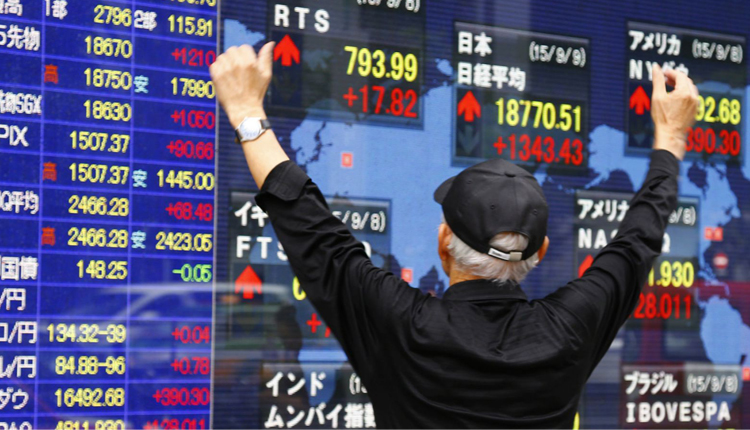Asian markets were mostly higher in Thursday afternoon trade after the U.S. Federal Reserve cut interest rates overnight — but appeared divided on its next course of action for the year.
Mainland Chinese stocks were mainly up by the afternoon, with the Shenzhen component rising 0.41 percent and Shenzhen composite adding 0.37 percent.
The Shanghai composite was largely flat. Hong Kong’s Hang Seng index, however, fell 1.24 percent as shares of life insurer AIA dropped 2.98 percent.
In Japan, the Nikkei 225 rose 0.57 percent while the Topix index added 0.75 percent. Over in South Korea, the Kospi gained 0.22 percent as shares of Samsung Electronics surged 2.2 percent.
Australia’s S&P/ASX 200 also rose 0.43 percent. Data released by the Australian Bureau of Statistics showed the country’s trend unemployment rate increased to 5.3 percent in August.
Following the employment data release, the Australian dollar last changed hands at $0.6786 after seeing highs above $0.684 in the previous session.
Overall, the MSCI Asia ex-Japan index shed 0.58 percent.
Central bank watch
The moves regionally on Thursday came as investors reacted to a series of recent moves by central banks across the globe.
The Fed cut its benchmark overnight rate by 25 basis points to a range of 1.75 percent to 2 percent, a move that was widely expected. It is the second time this year the central bank has lowered rates.
The Fed was, however, divided in its decision to lower rates, with three officials dissenting. Central bank officials are also split on further action this year. Five Fed members wanted to keep rates unchanged while five others supported lowering them to the current range and keeping them there. Seven others wanted at least one more rate cut.
The September Federal Open Market Committee (FOMC) statement, members’ votes and the updated policy rate projection reflect a “significant divergence” in view among the FOMC members, J.P. Morgan Asset Management Asia Chief Market Strategist Tai Hui wrote in a note. “This reflects the uncertain nature of the U.S. economic outlook.”
“We still believe risk is skewed to more rate cuts before the end of 2019, as part of the “insurance cut,”″ he said. “The progress of the US-China trade negotiation remains slow and this will continue to weigh on business sentiment. One important question is whether this cautious mood would eventually spillover into hiring decisions or slowdown wage growth.”
The U.S. dollar index, which tracks the greenback against a basket of its peers, was last at 98.468 after touching an earlier high of 98.623.
Following the Fed decision, the Hong Kong Monetary Authority announced Thursday it adjusted its base rate downward by 25 basis points to 2.25 percent.
The Bank of Japan (BoJ) kept monetary policy steady on Thursday. In an expected move, the BoJ maintained its short-term interest rate target at -0.1% and a pledge to guide 10-year government bond yields around 0 percent.
In its statement on monetary policy, the Japanese bank said “it is becoming necessary to pay closer attention to the possibility that the momentum toward achieving the price stability target will be lost,” in reference to the BoJ’s ever elusive 2 percent inflation target.
“The Bank will reexamine economic and price developments at the next (Monetary Policy Meeting), when it updates the outlook for economic activity and prices,” the BoJ said.
Following that decision, the Japanese yen traded at 107.85 against the dollar after seeing an earlier low of 108.46.
Oil prices rose in the afternoon of Asian trading hours, with international benchmark Brent crude futures up slightly to $63.63 per barrel and U.S. crude futures gaining 0.22 percent to $58.24 per barrel.
Source: CNBC



